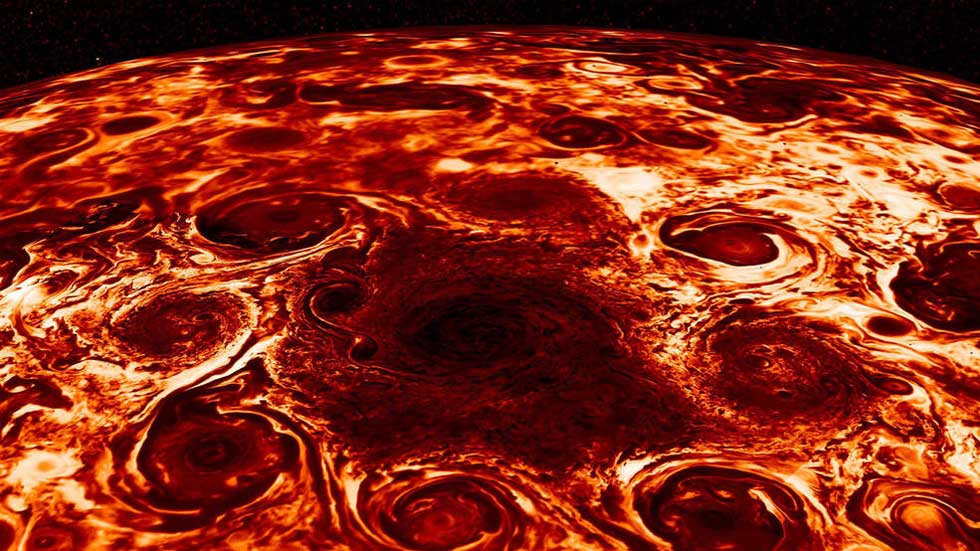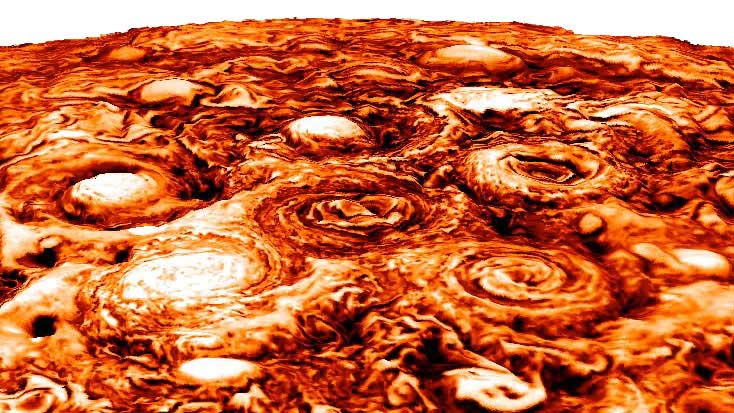NASA Juno Spacecraft Sheds Light On Jovian Atmospheric Features
NASA has the spacecraft Juno in orbit around Jupiter right now collecting scientific data about the gas giant and sending it back to Earth for study. The scientists say that the findings will improve our understanding of the interior structure of Jupiter, core mass, and its origins. Part of the scientific data sent back recently has to do with massive cyclones that surround the north and south poles of Jupiter.
The image here is a composite image derived from data collecting by the Jovian Infrared Auroral Mapper and is of the central cyclone at the north pole of the planet. The large central cyclone is surrounded by eight other cyclones and are said to be like nothing else discovered in our solar system. Data collected by Juno is also giving insight into the roots of the zones and belts of Jupiter.
Scientists say that on a gas giant planet the asymmetry seen in the zones and belts could only come from flows deep within the planet. The deeper the jet streams on the planet, the more mass they contain and cause a stronger signal expressed in the gravity fields. The magnitude of the asymmetry in gravity indicated how deep in the planet the jet streams extend.
Juno data has indicated that the weather layer of Jupiter is more massive and extended much deeper into the planet than previously expected. The weather layer at its very top to 1,900 miles down contains about one percent of the mass of Jupiter, which is about three Earth masses.
Data gathered also indicates that beneath the weather layer Jupiter rotates nearly as a rigid body. Those eight circumpolar cycles that surround the larger central cyclone on the planet's north pole are 2,500 to 2,900 miles in diameter. On the south pole of the planet is another central cyclone surrounded by five other cyclones ranging from 3,500 miles to 4,300 miles. Scientists are trying to determine why these cyclones don't merge.
SOURCE: NASA


